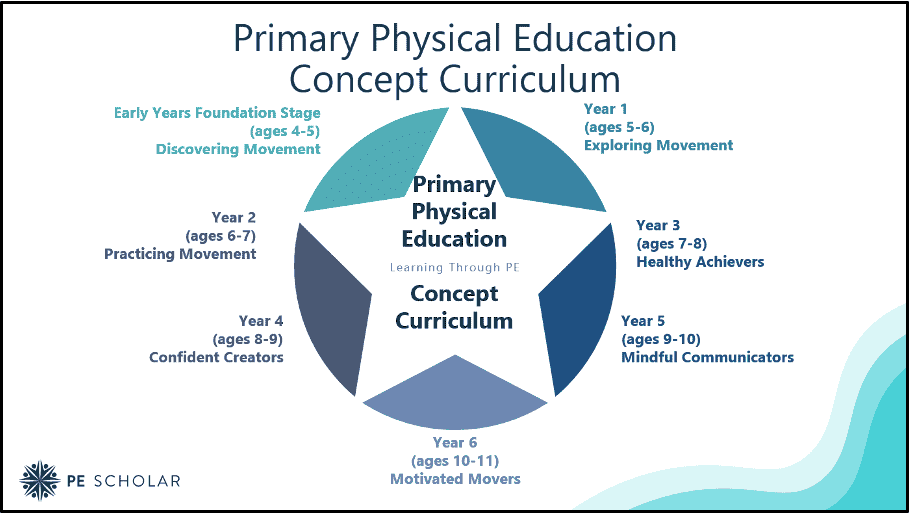
Introduction
Physical education plays a crucial role in a child’s development, fostering physical, emotional, and social growth. Year 1 is a critical stage for children to begin building fundamental movement skills, and one effective approach is through the Primary Concept Curriculum. In this blog, we’ll explore a PE lesson for Year 1 students, with a focus on personal, social, and emotional development, using an immersive pirate story as the backdrop.
Lesson Objectives
Before diving into the lesson, it’s essential to understand the three key lesson objectives that guide the teaching process: Know, Show, and Grow.
- Know (Cognitive Domain): This objective focuses on declarative knowledge, helping children understand what a safe environment in PE looks like, successful movement, and the rules and strategies involved.
- Show (Physical Domain): This objective centers on the development of fundamental movement skills and activity-specific skills. It aims to make children aware of safe performance and effective movements.
- Grow (Affective Domain): Beyond performance, the “Grow” objective nurtures holistic, PE-specific concepts vital for physical activity and sports. It encourages children to develop traits like persistence and resilience.

Opportunities to Develop Physical Competence in the Lesson
This lesson focuses (through the Show learning objective) on aiming, throwing and catching. These skills are foundational motor skills, forming the basis for more complex movements and physical activities as children progress through their PE curriculum journey. In this lesson, students are not only practicing these skills but also developing their hand-eye coordination, spatial awareness, and problem-solving abilities as they explore how their body can effectively adapt to aim an object. These skills are not limited to the PE class; they have applications in various sports and everyday life, making them valuable for overall physical and cognitive development.
Lesson Walkthrough
The Year 1 PE lesson revolves around a Pirate theme and involves facing challenges, building persistence, and developing fundamental movement skills, specifically aiming, throwing, and catching.
Energise, Explore & Link Activity
In this activity, students are grouped into small teams. Their mission is to transport “equipment” (represented by balls) from one end of the activity space to the other by rolling the balls. This exercise promotes body coordination, hand-eye coordination, and problem-solving. To add complexity, you can vary the distance between the starting and ending points, encouraging students to adapt their rolling technique.
Link Questions:
- How did you get the ball to go where you wanted it to go?
- How did you demonstrate persistence in this activity?
Activity 1
As part of the Pirate adventure, students participate in a game where they pretend to be touched by the Kraken and freeze when tagged. To break free, they must either have their arms encircled by a peer or catch a ball thrown by a classmate. This game helps students improve their throwing and catching skills while promoting persistence.
Activity 2
In this activity, students take aim at a Kraken target, practicing throwing and aiming skills. The teacher can adapt the game by varying the target’s size, distance, or even the size of the “cannonballs” (balls) used. This activity encourages precision, aiming, and, of course, persistence.
Activity 3
To wrap up the Pirate-themed lesson, students play a tentacle grabbing game, where they need to grasp moving objects (skipping ropes or ribbons) representing tentacles of the Kraken. This exercise enhances their grasping skills and hand-eye coordination.
Closing Questions:
- What did we learn about throwing and catching today?
- Why is throwing and catching important in PE?
Conclusion
This Year 1 PE lesson not only introduces students to fundamental movement skills but also cultivates important life skills like persistence and problem-solving. It combines imaginative play with physical activities, making learning enjoyable and memorable. As educators, it’s crucial to create engaging and purposeful PE lessons that contribute to the holistic development of young learners. Through well-planned activities and clear objectives, we can help Year 1 children develop physical skills and valuable that will serve them in PE, physical activity and sport for life.


Responses